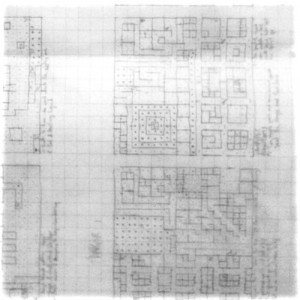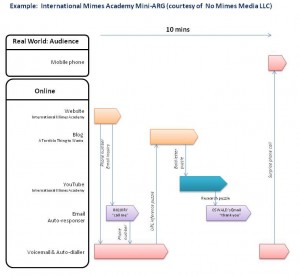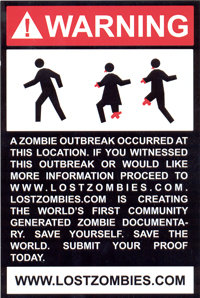 Who would have thought, so many years ago, that a community of gamers and storytellers, hobbyists and professionals, players and creators, would come together from around the world so often and so enthusiastically, to create an event as enjoyable, entertaining, and educational as ARGFest?
Who would have thought, so many years ago, that a community of gamers and storytellers, hobbyists and professionals, players and creators, would come together from around the world so often and so enthusiastically, to create an event as enjoyable, entertaining, and educational as ARGFest?
Bloomington, Indiana was ground zero for ARGFest 2011, and it was arguably the most successful fest to date. The most prominent thing I always seem to come away with from this annual event is this: Community. In the words of J.C. Hutchins, “People, man. People.”
Indeed, this conference/fest (or rather, “fest-o-con”) is filled with wonderful people, who come together in an environment that promotes equality and mutual respect and admiration for creative talents and inspirational ideas. Players and creators co-mingle, learning from each other, and often meet for the first time in person people only acquainted via a series of tubes.
Players learn how creators of ARGs and other experiences they’ve enjoyed actually think, and are given an opportunity to thank, and heck, even acquire autographs, of those people they admire. Puppetmasters and newcomers to the field have an extremely valuable opportunity to play games and chat with players – the people for whom they create their games, art, and stories.
This is what makes ARGFest tick.
People.
From panels and sessions composed of professionals and players (or players who have become professional creators…or even professional players) – to general social interaction and pure enjoyment of the venue and city in which the fest takes place. Below is an overview of what I took away from this year’s ARGFest.
The Hutch
 This year, I had the pleasure of finally meeting J.C. Hutchins. I first came across ‘The Hutch’ in late 2008 when he began blogging enthusiastically about a silver briefcase he received in the mail. This mystery “silver case” was quickly discovered to be part of an ARG executed for the video game FEAR 2. At that time, he seemed to me a super-mega-popular-celebrity-blogger with an infectious joy for excitement and stories and a healthy love for people, and I’d followed his antics ever since.
This year, I had the pleasure of finally meeting J.C. Hutchins. I first came across ‘The Hutch’ in late 2008 when he began blogging enthusiastically about a silver briefcase he received in the mail. This mystery “silver case” was quickly discovered to be part of an ARG executed for the video game FEAR 2. At that time, he seemed to me a super-mega-popular-celebrity-blogger with an infectious joy for excitement and stories and a healthy love for people, and I’d followed his antics ever since.
After meeting him this weekend at ARGFest – that perception has not changed. J.C. is a professional author and creative storyteller, with a demonstrated genuine love for people. He attended ARGFest to grace us with a keynote speech which he titled “Getting to Good”, in which he describes his years from college to today and the lessons he learned as someone who wanted to create things. His keynote hit me on a very personal level – I felt his passion, and his childhood and youth experiences struck a chord; how his life as a youth who often spent time alone shaped his perception of the world and the importance of story, and of people. His closing remark for those working their way up the ladder as a creator of stuff struck home: “You won’t be alone. If there anything this community has taught me, it’s that you’re not going to be working alone.”
That’s the key element to this community, as JC put it – “the incredible value of collaboration, playing nice with others”. So often fledgling creators are left wondering if what they’re doing, if the type of stuff they’re creating will be accepted and gain an audience, if their vision will be understood, if they can make a living on it. Or as players, we often find ourselves surrounded by people who don’t “get” what we do or what we love. Yet when we’re able to come together and form an oft-cited “hive mind”, something happens – not just an intellectual sharing of knowledge and experience, but a personal encouragement and inspiration, a whole greater than the sum of its parts. We are not alone; neither as players nor creators, and ARGFest really is an embodiment of this community mentality.
After the fest concluded, I and a number of other stragglers had the pleasure of having one last meal with him, and on his way out, he continuously emphasized how happy and thankful he was to be able to spend time with us. JC is indeed a celebrity of his own right, but he treated everyone else like the celebrities. That’s an inspiration, and if only everyone thought like that, one can only imagine the types of things we’d be able to create together.
Check out JCHutchins.net for more about his past work and collaborations. J.C. Hutchins left an indelible impression on us with his keynote speech – you can watch it below.
The ARGish Inquisition
 Through previous years, a tradition took hold in which an individual would act as a “Grand Inquisitor” – an evil character who opens the floor for questions during or after panels and speaker sessions, typically in a nefarious, challenging manner, asking the tough questions, and getting the ball rolling.
Through previous years, a tradition took hold in which an individual would act as a “Grand Inquisitor” – an evil character who opens the floor for questions during or after panels and speaker sessions, typically in a nefarious, challenging manner, asking the tough questions, and getting the ball rolling.
This year, Andrea Phillips took on the role, and gave it a twist… she’d hoped to play a kinder, gentler inquisitor. Where previous inquisitors (including the likes of Elan Lee, Brian Clark, and Steve Peters) entertained by instilling in speakers and panelists a nervous fear of the upcoming questions, she would ask the difficult questions in the manner of a sort of genuine curiosity.
However, whether it was her subdued evil demeanor, or the fact that all she made any audience members who had a question don a nefarious black wig, Andrea shared: “I was sure I’d be the mildest Inquisitor ARGfest has ever seen, but in fact I found depths of cruelty I hadn’t realized were there.”
Andrea did a wonderful job as Grand Inquisitor this year, clearly putting much thought and effort into her role! You can follow her musings and writings at DeusExMachinatio.com.
Curation? A 4DF first
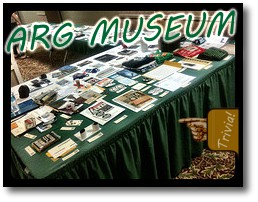 At previous fests, the ARG museums were organized by the likes of Dav Flamerock, Agent Lex, and Konamouse. With past organizers not in attendance this year, however, I was asked if I’d be willing to step in to head up the display. After brewing on it for a while, I opted to take the step.
At previous fests, the ARG museums were organized by the likes of Dav Flamerock, Agent Lex, and Konamouse. With past organizers not in attendance this year, however, I was asked if I’d be willing to step in to head up the display. After brewing on it for a while, I opted to take the step.
Then it got real… The fest that is. Taking on the museum with only a few weeks to spare, I didn’t want it to be a half-brained last-minute fest component. I have a great respect for the creative talent that’s poured into artifacts created for use in many ARGs and marketing campaigns — It’s only fair to put a solid effort into displaying that work as an inspiration to other creators.
So, in moving forward, I opted to extend the museum with an additional element. I’d initially intended to have QR codes provide a detailed outline about each project on display, a sort of mini-IMDB purely for this ARGFest museum. But, as the weeks before ARGFest turned into days, there simply wasn’t enough time to build the entire system and catalogue all the details I’d envisioned.
In the end, I focused on a trivia element for the museum, providing for attendees a chance to have a bit of fun, test their past knowledge, and encourage a little more appreciation and exploration of the artifacts others had created. The mobile web-based trivia system ended up being a great success.
There was even an…unexpected intrusion. Some other evil inquisitor hatched a plot to infiltrate the museum and trivia game in a fit of vengeance, having been replaced by this year’s kinder inquisitor. It appeared, however, that this “Evil inQuisitoR” hatched his QR plan a little too late, and thankfully no ill came of it. Let that be a lesson to envious inquisitors looking for vengeance – it helps to launch your plans while there are still curious eyes exploring the exhibits, and less drowsy, sleepy-eyed late-night partiers who’ve already done their fair share of exploration. ;)
At the conclusion of the sessions, 5 winners were announced and given bragging rights for their ARG knowledge – Dee Cook, Daniel Van Gool, Kyle Woollums, Eric Kays, and Jim Senderhauf. Prizes included a selection of topically related books including:
Unfortunately my time at the fest ended up more focused on the museum than the sessions, but it was a fun and a rewarding experience. I was honored to be asked to take on the task, but my thanks must go out to all those who donated items for the museum display and trivia prizes, as well as helping with many trivia questions – it would not have been a success without you.
On Hospitality, Hustling, Herman and a Silver River…
While half of ARGFest is composed of panels and sessions, the other half is a social and gaming mixing pot. Other elements include FestQuest, a hospitality suite, and the straggler’s supper, but there may also be anything from collaborative mystery solving to late night drinkering at local establishments.
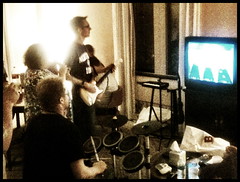 One element that seems to have become a tradition are Rock Band sessions in the hospitality suite. It’s quite a spectacle when a packed room erupts along with a drumset and two guitars in a chorus of Still Alive. The hospitality suite is the hang out during periods between scheduled events, and especially in the evening while people trickle away for what few hours of sleep remain each night.
One element that seems to have become a tradition are Rock Band sessions in the hospitality suite. It’s quite a spectacle when a packed room erupts along with a drumset and two guitars in a chorus of Still Alive. The hospitality suite is the hang out during periods between scheduled events, and especially in the evening while people trickle away for what few hours of sleep remain each night.
The sessions this year were opened with an entertaining game from Awkward Hug (creators of Must Love Robots and Socks Inc.) called Wisconsin Hustle. This is a mobile game that’s set to release in winter 2011, but was brought to ARGFest for play-testing in card form and, well, for pure entertainment. Suffice to say, many retro dance moves made a reappearance, and the game got rave reviews from attendees (though no one ended up pantsless).
Another thing people have started doing in recent years is geocaching. Having been geocaching for two years now, I made the effort to get out and around the venue area, as did a few others who have taken up the hobby. Bloomington boasts a fairly active geocaching community, and Indiana University is peppered with caches around campus – including one named for Herman B. Wells, “Hangin’ with Herman“. I visited this one with SynthBio, and we had a bit of… fun with Herman. Geocaching is also a great way to appreciate the area and even learn a bit more about its history.
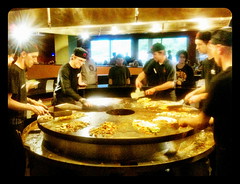 What better type of meal at an interactive storytelling/gaming conference than an interactive restaurant? A crowd of us hit up the HuHot Mongolian Grill for dinner on Saturday night. At the Grill, you fill a bowl of ingredients of your choosing to hand off to the grillers who literally circle a sizzling slate, tossing and cooking up your meal in front of your eyes as you wait, and making a show of it. And it’s also Delicious!
What better type of meal at an interactive storytelling/gaming conference than an interactive restaurant? A crowd of us hit up the HuHot Mongolian Grill for dinner on Saturday night. At the Grill, you fill a bowl of ingredients of your choosing to hand off to the grillers who literally circle a sizzling slate, tossing and cooking up your meal in front of your eyes as you wait, and making a show of it. And it’s also Delicious!
In addition to the social elements, gaming, discussions, sessions and panels on ARGs and transmedia, often there are puzzles included in the festivities. This year was no exception, although much of the puzzling seemed to be well focused on one particular piece from fellow Canadians Stitch Media. In the same manner as last year, Evan Jones included a puzzle in the ARGFest program. An apparently simple puzzle taunting attendees to solve it — a few lines of poetic phrases, emblazoned with Stitch’s logo. …were it so easy.
A number of us pored over the puzzle, drawn in by its intricacies and stubborn mysteries. We researched, tested, played, folded, poked, drew, scratched, and tore our hair out over the course of the weekend. All to no avail. Eventually, with the fest drawing to a close, we were nudged ever so slightly in the right direction, until it finally clicked, and we saw glorious freedom from its shackles! That puzzle is here reproduced along with the hints for your likewise inevitable discombobulation.
Socks and Cogs: FestQuest
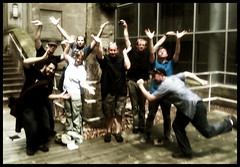 This year’s FestQuest was organized by Studio Cypher‘s Ian Pottmeyer. It began Saturday at 1pm a couple of blocks from the venue. We set off at staggered time in a number of teams, following clues that took us from location to location around the university, with puzzles ranging from mathematical riddles to cryptic decoder rings to maze-like instructions told to us by Ian-himself-disguised-in-drag.
This year’s FestQuest was organized by Studio Cypher‘s Ian Pottmeyer. It began Saturday at 1pm a couple of blocks from the venue. We set off at staggered time in a number of teams, following clues that took us from location to location around the university, with puzzles ranging from mathematical riddles to cryptic decoder rings to maze-like instructions told to us by Ian-himself-disguised-in-drag.
Teams set out at scattered times, but it was my team that ended up at the destination last. Not without reason, of course! With the intended access to a segment of the quest unexpectedly locked, we still opted to go for the full experience, so we circled around the building for another access point into an underground tunnel spanning two buildings on the campus. We were glad we did, but it also allowed another team to pass us. Nonetheless, much entertainment, brain teasing, and hijinks were had in this year’s FestQuest.
In the end, it was another raging success with many heartily enjoying the experience. Many props to Studio Cypher on a well-planned and executed scavenger hunt.
Other memorable moments
On Friday night I had an intriguing chat with Reed Berkowitz (@soi) regarding his perspective on the nature of fiction and reality. Reed spoke on the Saturday morning in a session entitled Reality As a Story-telling Medium. He had some very intriguing and philosophical views on the perception of reality, truth, and fiction, and his session prompted a good amount of questions.
Martin Aggett of Remix Fiction launched a new project at ARGFest through the ARG Museum. The Martin Aggett Story chapter 1 ran in parallel to ARGFest, and included a black briefcase display incorporated into the museum. Some elements of his launch plans were met with a few minor hiccups though, which he discusses at opengamedesign.com. But hey, who could avoid examining a mysterious briefcase in the environment of mysteries that is ARGFest?
In heading across the border on the way to ARGFest, I also learned a lesson for future border crossings with a large luggage bag of random collected items: Don’t say you’re going to a “convention” and setting up a “display”. That equates to products and sales at the border crossing guards. Also, document and itemize all items in print for easy perusal when questioned, including a detailed outline of what you’re actually doing, and for whom. (Who merely ‘attends’ an organized event, but helps with an element of the event itself, voluntarily, with no monetary gain?)
Final thoughts
There is a growing group of us who would be excited and willing to prepare a proposal for ARGFest Toronto 2012 – any thoughts? Where would you like to see ARGFest next year?
For photos from ARGFest Bloomington, check out this flickr group!
Below are some of the sessions from the weekend as videos or in slide form. Thanks for Remix Fiction for recording and making videos available on Vimeo:
Now, if you dare, continue on to page 2 to relive ARGFest vicariously through a collection of tweets that went out from attendees over the weekend!



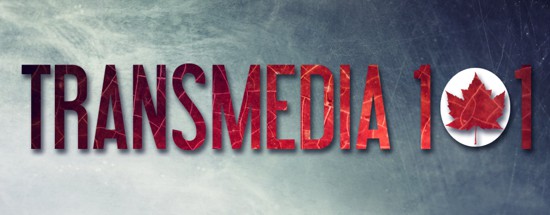

 ByoLogyc Inc
ByoLogyc Inc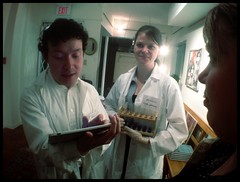





































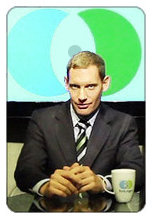
 On March 20th 2012, ByoLogyc is hosting an exclusive preview event specifically for IndieGoGo supporters and select invitees. ByoLogyc products will be on display for perusal and hands-on viewing. Chet will also be speaking in person following a special video presentation.
On March 20th 2012, ByoLogyc is hosting an exclusive preview event specifically for IndieGoGo supporters and select invitees. ByoLogyc products will be on display for perusal and hands-on viewing. Chet will also be speaking in person following a special video presentation.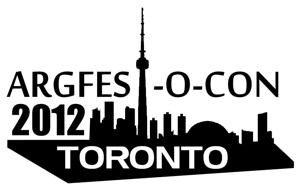
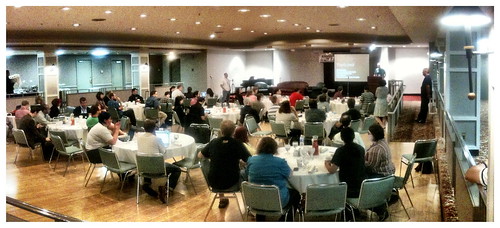
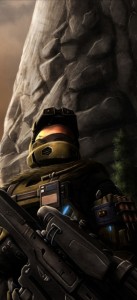
 ————–
————–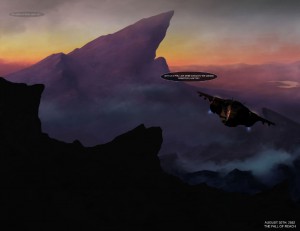
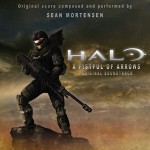
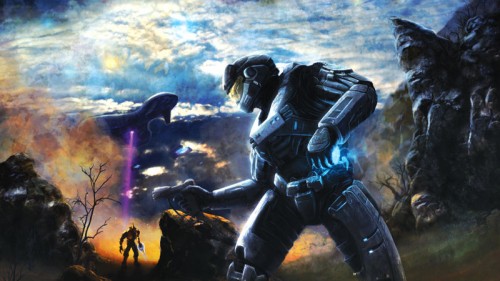
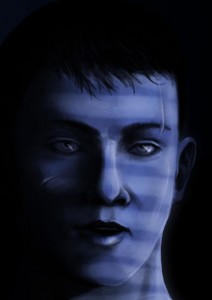


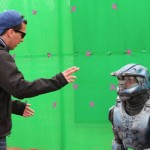
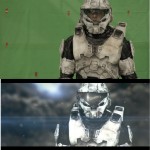
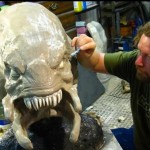
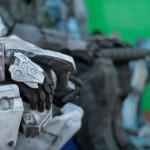
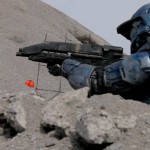
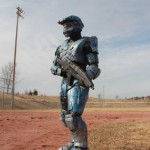
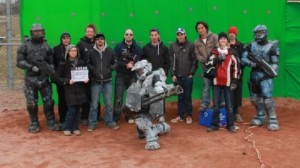

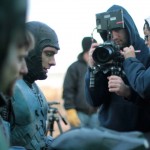

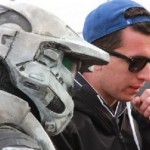



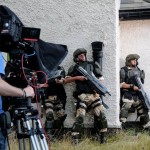
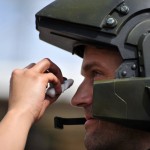


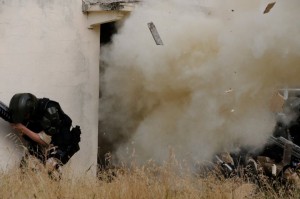

 Who would have thought, so many years ago, that a community of gamers and storytellers, hobbyists and professionals, players and creators, would come together from around the world so often and so enthusiastically, to create an event as enjoyable, entertaining, and educational as ARGFest?
Who would have thought, so many years ago, that a community of gamers and storytellers, hobbyists and professionals, players and creators, would come together from around the world so often and so enthusiastically, to create an event as enjoyable, entertaining, and educational as ARGFest?





 This year I’m happy to announce that 4D Fiction will be officially curating the ARG Museum. This element of ARGFest is a place where creative artifacts and ‘swag’ incorporated into various campaigns and artful projects are put out for display for the fest attendees. It’s an opportunity for everyone to check out the work others have put into extending their storyworld tangibly into our reality, and perhaps for some aspiring puppetmasters and artists to gain some inspiration from others’ works.
This year I’m happy to announce that 4D Fiction will be officially curating the ARG Museum. This element of ARGFest is a place where creative artifacts and ‘swag’ incorporated into various campaigns and artful projects are put out for display for the fest attendees. It’s an opportunity for everyone to check out the work others have put into extending their storyworld tangibly into our reality, and perhaps for some aspiring puppetmasters and artists to gain some inspiration from others’ works.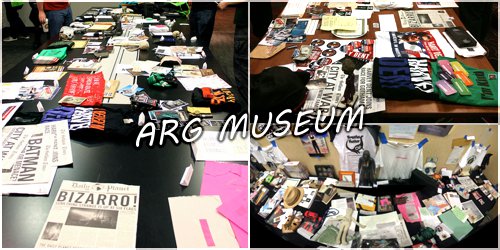
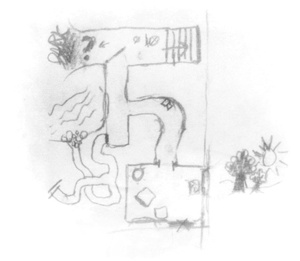 I can’t remember how it actually started, but this was what we did for fun: We each took turns designing mazes on paper, secretly, on our own time, and then we’d sit down and take turns pretending to be trapped in each others’ mazes, exploring and trying to escape by saying where we wanted to go or what we wanted to do.
I can’t remember how it actually started, but this was what we did for fun: We each took turns designing mazes on paper, secretly, on our own time, and then we’d sit down and take turns pretending to be trapped in each others’ mazes, exploring and trying to escape by saying where we wanted to go or what we wanted to do.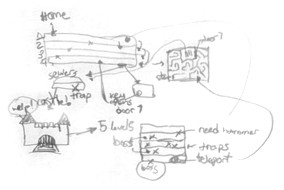 The more we played, the more adventurous our games got, the more our levels ‘matured’ as we tried new things. The environments became labyrinths, forests, or space ships with intricate maps and structures. We’d start writing little introductory stories to lay out a mission or some task that had to be accomplished. I remember designing out levels of buildings, with secret rooms and interesting items to find, pick up and discover. We even built in ‘triggers’ where, for example, we’d note that somewhere on that map a door or hole in a wall might now be open if they picked up a particular item or flipped a switch somewhere else.
The more we played, the more adventurous our games got, the more our levels ‘matured’ as we tried new things. The environments became labyrinths, forests, or space ships with intricate maps and structures. We’d start writing little introductory stories to lay out a mission or some task that had to be accomplished. I remember designing out levels of buildings, with secret rooms and interesting items to find, pick up and discover. We even built in ‘triggers’ where, for example, we’d note that somewhere on that map a door or hole in a wall might now be open if they picked up a particular item or flipped a switch somewhere else.